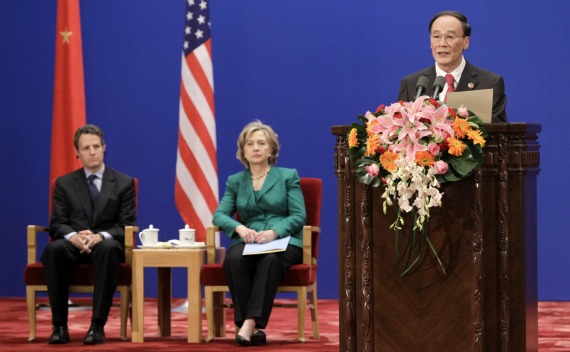More on:

Let me share a short piece I wrote for the CFR website on the third round of the Strategic & Economic Dialogue underway during May 8-10. I am a big fan of limited expectations when it comes to relations between China and the United States, and I think the tone of this dialogue reflects such pragmatism. At one briefing I attended down in DC, the thrust was all about how to develop strategic trust. I am not sure how that happens, but I applaud both sides for trying.
A welcome air of reality is blowing through Washington these days as the Obama administration readies itself for the third round of the Strategic and Economic Dialogue with China (S&ED), on May 8-10. Avoiding misplaced optimism, senior administration officials are, for the most part, discussing the dialogue in terms that reflect not only the importance but also the challenges inherent in the bilateral relationship.
At a May 5 press briefing, Assistant Secretary of State Kurt Campbell was particularly restrained in discussing ambitions for the political and security dialogue. He highlighted the complex nature of the relationship and the “candid” and “honest” discussions he anticipates on issues ranging from North Korea to food assistance to human rights. Given the uptick in Chinese diplomatic and military assertiveness, as well as the current crackdown on political and cultural figures in China, the State Department faces a challenging array of issues in a difficult political climate.
Expectations for the S&ED appear to be a bit higher at the Treasury Department. At the same briefing with Campbell, David Loevinger, senior coordinator and executive secretary for China and the S&ED at Treasury, attributed a number of recent shifts in Chinese policy--the development of the offshore renminbi (RMB) market, China’s plan to increase domestic consumption, and the recent appreciation in the RMB--to dialogue between the United States and China. While such claims may be a bit overstated, Loevinger hit the nail on the head when he said that the most important decisions regarding the ability of the United States to deal with the opportunities and challenges of a rapidly growing China will not take place at the S&ED, but rather will take place at home. The United States, he noted, must invest more in its intellectual infrastructure as well as create incentives for companies to invest in the United States and promote its exports abroad.
As for actual deliverables from the S&ED, the most important will likely be the addition to the agenda of several items critical to U.S. interests, such as cybersecurity. Concern over Chinese cyberattacks on U.S. government networks and corporations has risen sharply in recent years; getting the right Chinese to the table to discuss the issue represents an important first step in addressing the problem. Export-credit financing--an area where China has become a world leader--will also assume a new place of prominence in the Treasury secretary’s dialogue. Not only the United States but also the European Union and Japan are eager to bring China into an agreed framework for export financing in such critical areas as the aircraft sector.
Most importantly, perhaps, the dialogue will now include senior military representatives from both sides. Given the sporadic nature of senior military engagement in recent years, this dialogue is an excellent opportunity to re-engage as well as to gain greater insight into the role of the People’s Liberation Army in the Chinese policy process.
If the S&ED has lost some of its initial excitement and hype, it is likely all for the best. The Obama administration’s realism may not promise much, but at least it holds the possibility of delivering on its promises.
More on: